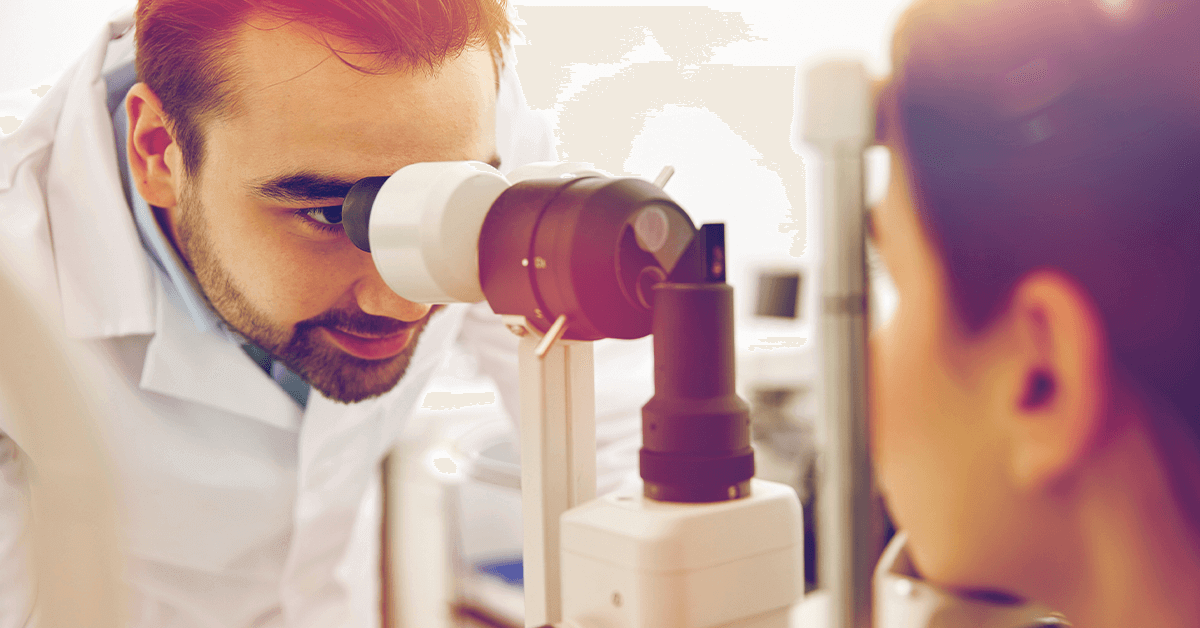
03 Nov See the Full Picture: Why Optomap Retinal Imaging Beats Traditional Dilation
If you’ve ever had a traditional eye exam in Billings, Montana, you probably know the drill: stinging eye drops, blurry vision for hours, and wearing massive temporary sunglasses home. That uncomfortable procedure is called dilation, and it’s how doctors used to examine the inside of your eye. Today, Total Eye Care offers an exciting alternative: Optomap Retinal Imaging. This technology offers a fast, comfortable, and incredibly detailed view of the back of your eye without the need for dilation. It’s a game-changer that helps us find issues earlier, saving you time, discomfort, and potentially your vision.
What is the Retina and Why Do We Need to See It?
To understand why the Optomap is so important, it is essential to know about the retina. Think of your eye as a camera, and the retina is the film in the back of the camera. It’s the light-sensitive tissue that takes the image of the world and sends it to your brain through the optic nerve.
The retina is vital, and it’s where many serious eye diseases and even signs of full-body illnesses start. We need to check it for:
- Diabetic Retinopathy: Damage to blood vessels caused by diabetes.
- Glaucoma: Damage to the optic nerve.
- Macular Degeneration: Deterioration of the central part of the retina.
- Retinal Tears or Detachments: Serious issues that can lead to blindness if not caught early.
- High Blood Pressure Signs: Tiny changes in the blood vessels can show signs of hypertension.
If these problems are not found quickly, they can cause permanent vision loss.
Traditional Dilation: The Necessary Hassle
For decades, the only way a doctor could examine the retina thoroughly enough to check for these issues was by using dilating eye drops. These drops temporarily make your pupils—the black center of your eye—very large. A large pupil is like opening a wider door, allowing the doctor to shine a light in and look around the back of your eye with a magnifying lens.
While effective, dilation has significant side effects:
- Blurred Vision: Your eyes lose the ability to focus up close, making it impossible to read, work, or use a computer for several hours.
- Light Sensitivity: Since your pupils can’t shrink, you become extremely sensitive to sunlight, glare, and bright lights.
- Lost Time: You usually have to wait for the drops to take effect, and you cannot safely drive yourself home, forcing you to find a ride or waste half your day.
The Optomap Difference: Comfort and Clarity
Optomap vs dilation Billings is a choice for modern, efficient, and thorough eye care. Optomap Retinal Imaging uses advanced scanning laser technology to capture an ultra-wide, high-resolution digital image of your retina.
Here is why patients at Total Eye Care love the Optomap:
1. Fast and Painless
The entire imaging process takes less than one second, and you only see a mild, quick flash of light. There is no discomfort, no drops, and no waiting.
2. No Downtime
Since your eyes are not dilated, you can return to your regular routine immediately. You can drive, go back to work, read, and look at your phone without any blurriness or light sensitivity. Scheduling your comprehensive eye exam in the middle of the day is no longer an inconvenience.
3. See the Full Picture
The Optomap captures about 80% of your retina in one single image. This provides a much more comprehensive view than what can often be seen with traditional dilation alone. This panoramic view allows your doctor to check the entire retina, including the edges (peripheral areas), where early problems like tears or detachments can often hide.
4. The Digital Record
Since the image is digital, it becomes a permanent part of your eye health record. This is one of the most powerful benefits! In future years, your doctor can pull up your past images, place them side-by-side with your new scan, and instantly see even the minor changes in your retina over time. This ability to track changes year after year is the key to early detection of eye disease, allowing us to treat problems before they damage your vision.
The Best Approach: Combining Technology and Expertise
While the Optomap is a fantastic piece of technology, it is essential to note that in some cases—especially if you have specific symptoms or risk factors—your doctor may still recommend dilation for a more detailed examination.
At Total Eye Care, we believe that using the Optomap is an essential part of your annual comprehensive eye health exam. We strongly recommend it for every patient because it enables us to provide you with a higher level of care in the easiest and most comfortable way possible. In fact, we never charge extra for dilation once you’ve purchased the Optomap, ensuring you receive the most comprehensive care available.
If you are due for your annual eye exam in Billings, MT, don’t put it off because you dread the drops. Choose the comfort and clarity of advanced technology. Schedule your comprehensive eye exam with Optomap imaging at Total Eye Care today and experience eye care without the inconvenience.

